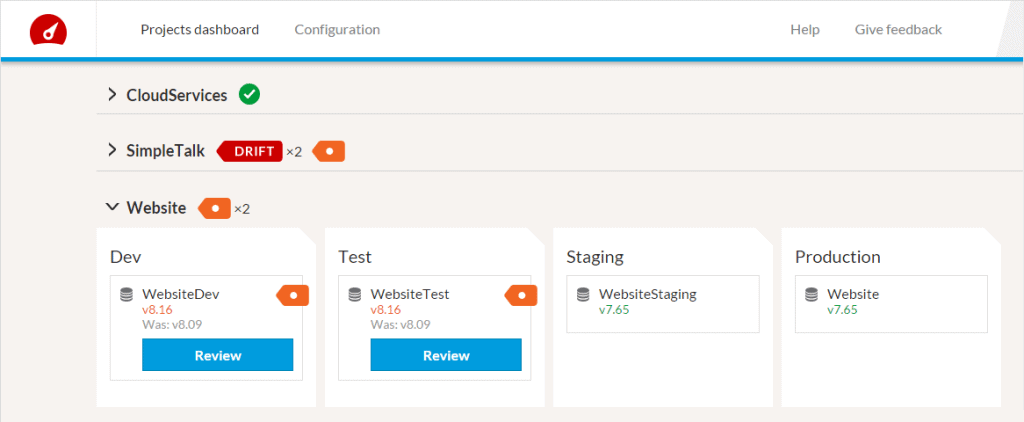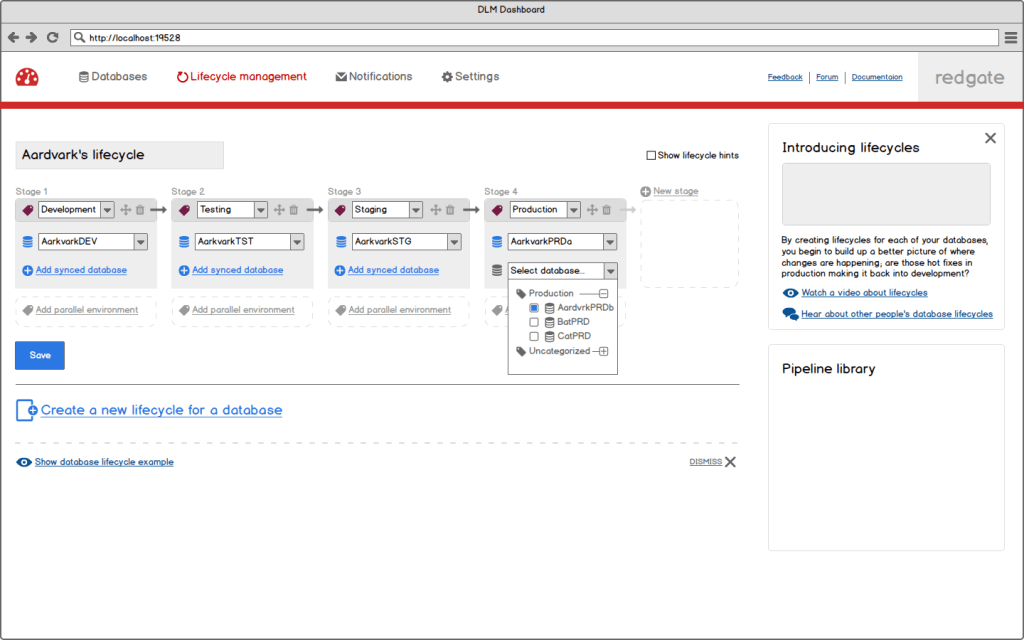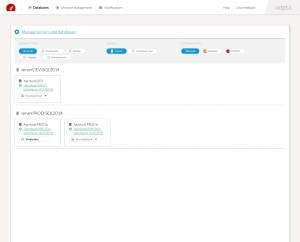Organizing databases on the DLM Dashboard
Hopefully you’ve already heard about DLM Dashboard? It’s Redgate’s new free tool for helping anyone who’s responsible for knowing what database schema is deployed where. If you hadn’t heard of it please feel free to download it, set it up, and come back to reading this post in about half an hour…
Back with us? Great!
What is the DLM Dashboard?
In a nutshell DLM Dashboard sends you emails when your database schema changes, and tells you what changed, how it was changed and who changed it. It can gives you an awesome history of what was deployed where, along with your commentary about why it was deployed. It also automatically spots and labels database schema that is has seen before, so you can see your changes flowing from development up to production.
Organizing databases
If you have more than one database that you care about, as a dashboard user you need a way to organize the information you’re seeing in front of you. The tool has the concepts of ‘Environments’ and ‘Projects’ to help with this. However since we launched the very first alpha version of DLM Dashboard in August 2014 we’ve had lots of feedback, and our own internal reservations, about the concept of ‘Projects’ in the tool.
What projects are used for isn’t very clear, and they have been more confusing for most of our users than they have been helpful. We’re planning to rework the concept into something much clearer. However in order to do that we’re going to need to remove the current projects concept for a few months while we build the pieces we need to make an awesome way of organizing your dashboard.
We’ve made the decision to remove projects upfront, rather than have them stay around as a ‘legacy’ feature. We’re doing this because we’re going to be able to develop new features much faster, and with fewer bugs, if we focus on a single user experience. We’re proud of our weekly release cadence and the rate at which we’re launching new features (see the release notes), we don’t want to slow down. It’s also going to mean that the DLM Dashboard is clearer and even easier to setup.
Where we want to get to
We want to get to something like this:
Here you’re able to group multiple databases together into groups, and apply a representation of a workflow that matches the development lifecycle of each database.
How we’re going to get there
The above is going to take us a little while though, and we have some other great features we want to do along the way. It’s going to be later this year before we’ll have that done. So first, in the next month or so, we’re going to get to the below, where you can sort by environment or by server. From our research and your feedback we believe this will be a much more useful way of organizing features for most of our users.
If you only have a few databases in the dashboard, these views will replicate projects pretty well. However if you have a lot of databases we do understand that we’ve temporarily removed a mechanism that helped you sort your dashboard screen. Please bear with us, we’d really like your help and input to refine our plans for great way to organize your databases! We’ll make sure we tell you in our release notes and the check for updates mechanism when there’s a big breaking change like this.
Please let us know what you think
If you’re happy to share your thoughts on what should replace projects, please leave us a comment here, or on the UserVoice forum, or drop us a note on dlmdashboardsupport@red-gate.com. They’ll really help us to build a great successor feature to projects that make DLM Dashboard even better for you to use.



